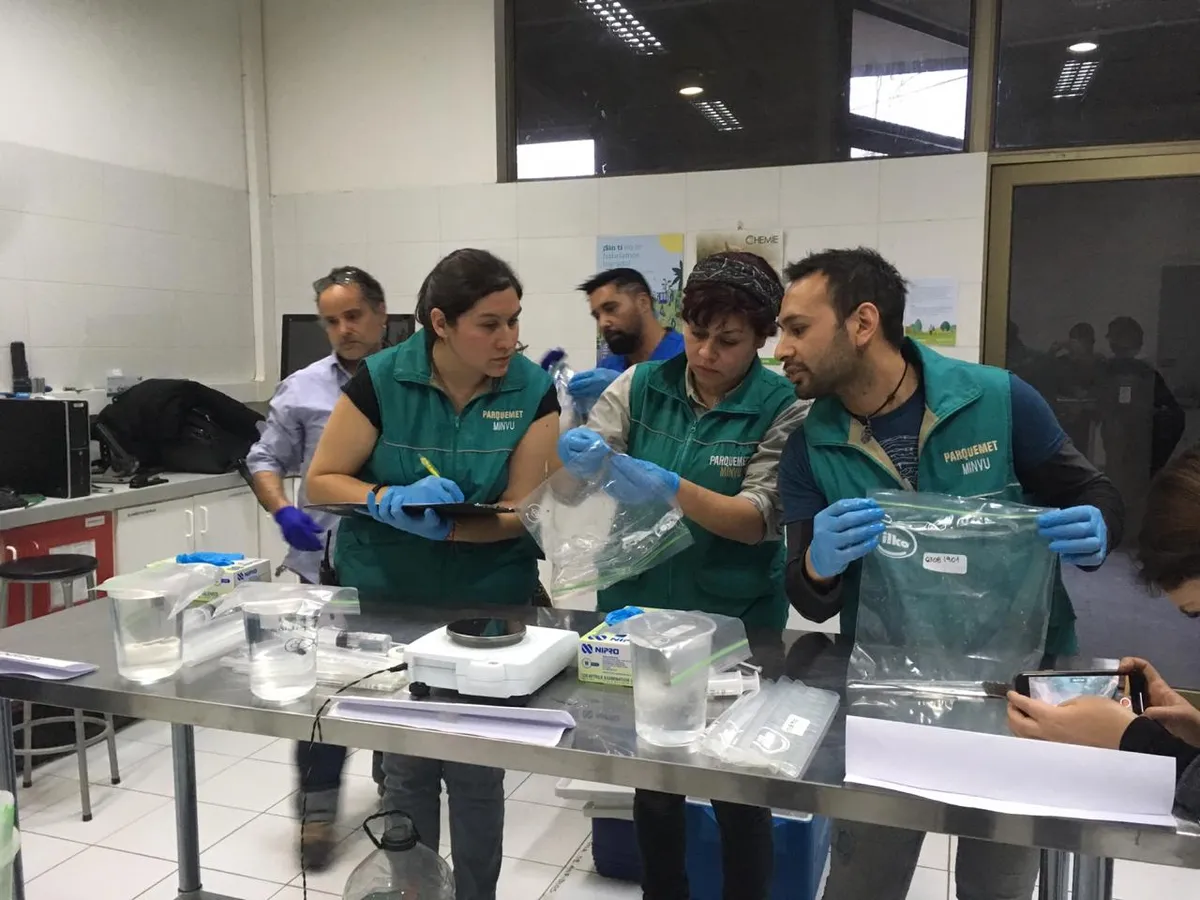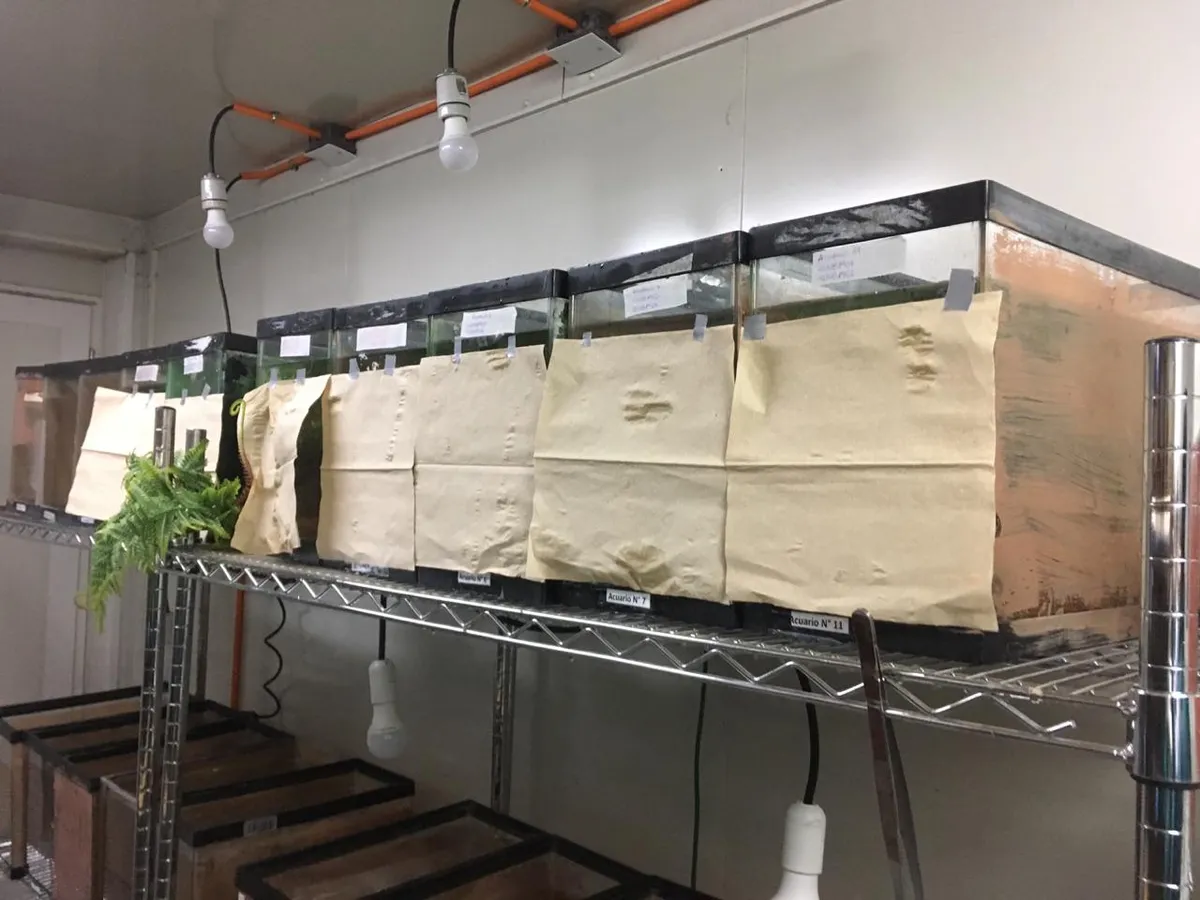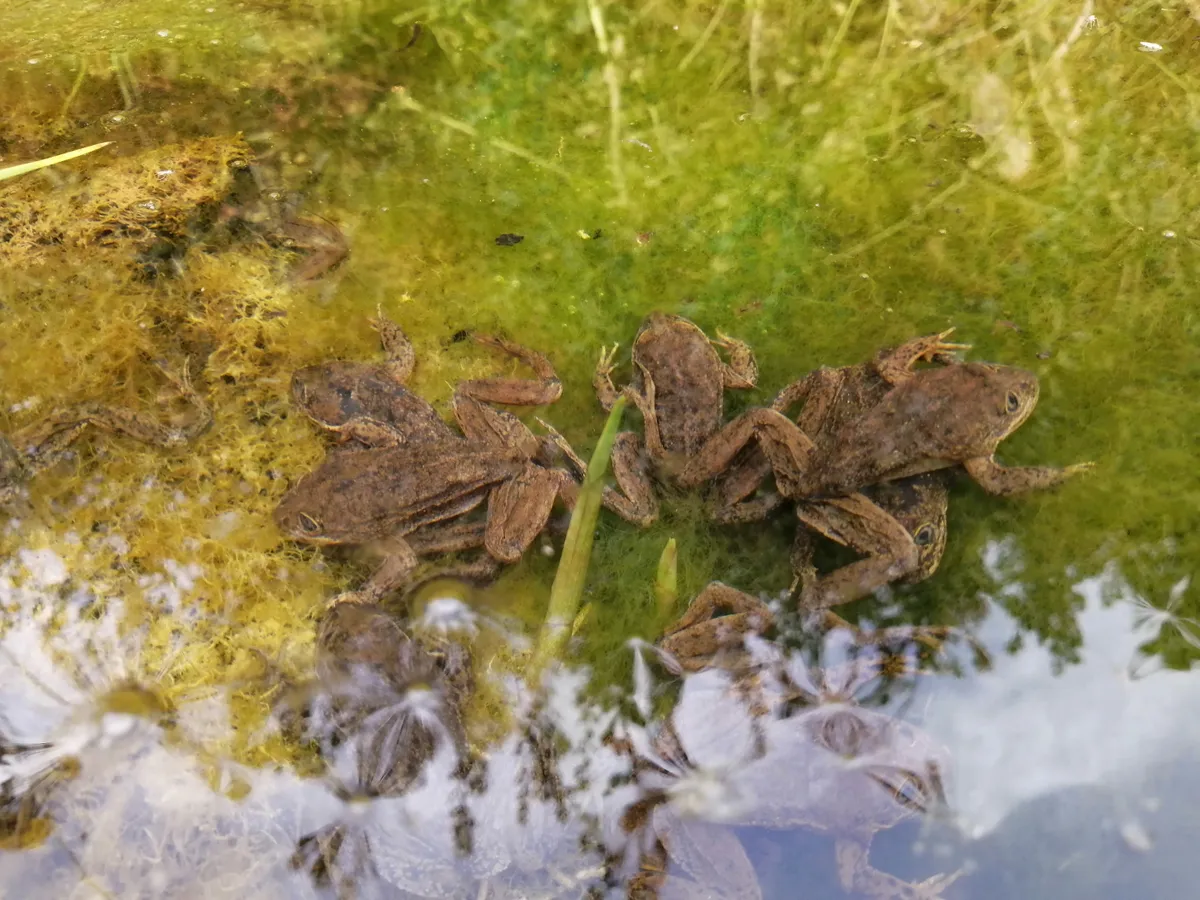The Loa water frog, Telmatobius dankoi, a species listed as Critically Endangered on the IUCN Red List, was saved from extinction thanks to the swift actions of conservationists, indigenous leaders and government officials in Chile.
The species was only known from one stream in the middle of the Atacama Desert, an area where water is very scarce.
In June 2019, Andrés Charrier, a herpetologist from the Chilean Herpetological Association, took some colleagues to see the Loa water frog, a species that he has been studying since 2013.
He expected to find dozens of healthy frogs in their stream, but instead, they found nothing.
“The creek was completely dry,” says Charrier. “The grasses were dry and brown and we didn’t even find the carcasses of frogs, which means that it had been dry for a very, very long time. It’s something we talk about all the time—frogs are at risk, animals and the environment are at risk, climate change and drought, extreme weather conditions. But I have been working in conservation for the last 10 years with frogs and I never expected to see something like this.”
Water had been extracted illegally for mining, agriculture and real-estate development, and only a tiny muddy pool was available for the frogs, which Charrier found three days later on a return visit to the area.

Digging in the pool, Charrier and his colleagues found sickly, skinny and malnourished frogs.
“We had a choice to make,” Charrier says. “As scientists, we could either do something or we could leave the frogs there to die and then publish a paper about the extinction of the Loa Water Frog. We decided to do something.”

The 14 frogs, the last of their kind, were brought to the Chilean National Zoo to be nursed back to health and to start a conservation breeding program.
“The first big challenge is to help these frogs survive, and while the rescue was the best chance to save the Loa water frog, there are always risks with trying to care for a new species – especially when the animals are already struggling,” says Alejandra Montalba, director of the Chilean National Zoo. “That’s the main goal right now, and later we need to be able to breed them.”

The 14 frogs consist of six females, seven males and an unidentifiable juvenile. Upon arrival at the zoo, they were weighed and examined for illness.
One of the hardest parts of looking after them is getting the water right, as they need a different chemical formula than all the other frogs in the zoo, including the other water frogs.

“I have experience with many species of amphibians, but this is the most difficult case I’ve ever had,” said Osvaldo Cabeza, supervisor of herpetology at the Chilean National Zoo. “But every day that passes, I feel that this species is telling us its secrets and how we can contribute to their wellbeing. Seeing the frogs’ slow recovery is really exciting – it fills my heart to see how they’re gaining weight and that their health is improving.”
International wildlife organisations are now calling on the government of Chile to protect and restore the drained habitat.
“We request that consideration be given to the development of an emergency plan for the protection and recovery of Loa frog habitat,” said Jon Paul Rodríguez, chair of the IUCN Species Survival Commission (Rodríquez also features in the September issue of BBC Wildlife Magazine, having won the Whitley Gold Award 2019 for his outstanding contribution to conservation). “For this reason, we call for the establishment of a technical working group to assist the work in this matter.”
The Loa water frogs are a relative of Romeo, a Sehuencas water frog from Bolivia, formerly known as the world’s loneliest frog.
There are 63 described species of water frogs, all of which live in the Andean Highlands in South America. Many live in just one location like the Loa water frog.

Main image: A malnourished frog. © Ministry of Housing and Urbanism of Chile
